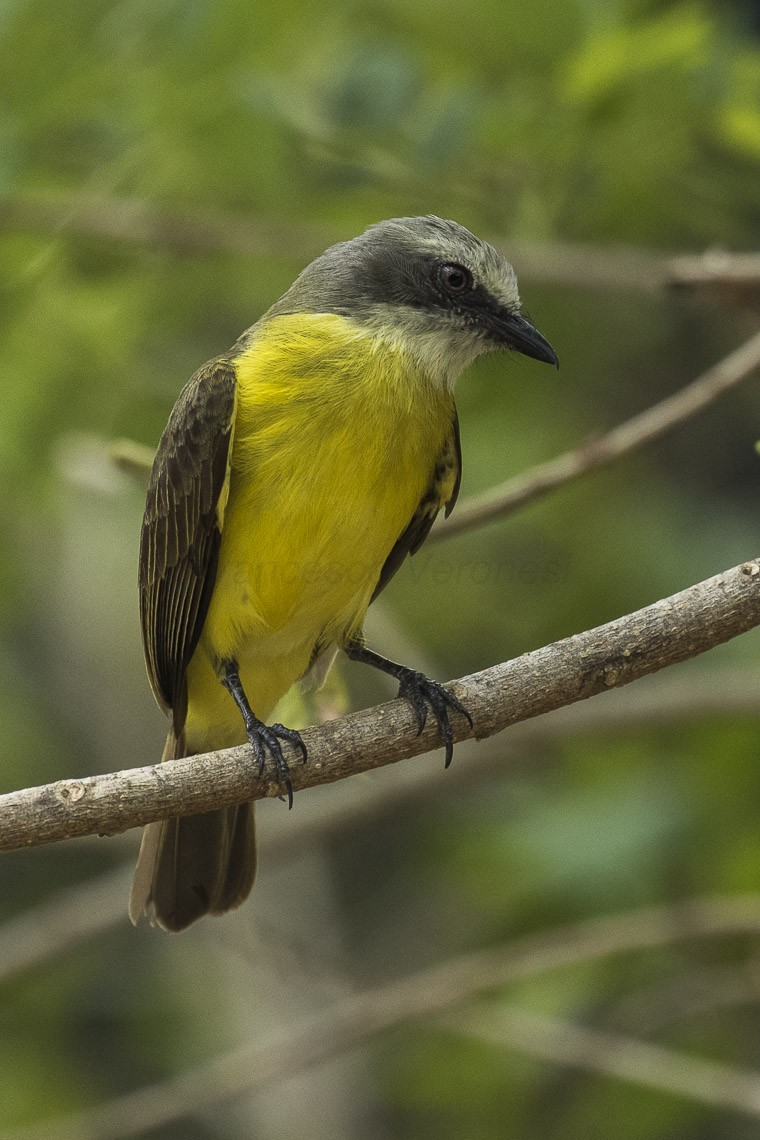Grey-capped Flycatcher
A species of Myiozetetes Flycatchers Scientific name : Myiozetetes granadensis Genus : Myiozetetes Flycatchers
Grey-capped Flycatcher, A species of Myiozetetes Flycatchers
Botanical name: Myiozetetes granadensis
Genus: Myiozetetes Flycatchers
Content
Description General Info
 Photo By Francesco Veronesi , used under CC-BY-SA-2.0 /Cropped and compressed from original
Photo By Francesco Veronesi , used under CC-BY-SA-2.0 /Cropped and compressed from original Description
The grey-capped flycatcher (Myiozetetes granadensis) is a passerine bird, a member of the large tyrant flycatcher family. It breeds in cultivation, pasture, and open woodland with some trees from eastern Honduras south to northwestern Peru, northern Bolivia and western Brazil The nest, built by the female in a bush, tree or on a building, is a large roofed structure of stems and straw, which for protection is often built near a wasp, bee or ant nest, or the nest of another tyrant flycatcher, such as the similar social flycatcher, Myiozetetes similis. The nest site is often near or over water. The typical clutch is two to four brown or lilac-blotched dull white eggs, laid between February and June. In appearance the grey-capped flycatcher resembles the social flycatcher, which shares much of its range. The adult grey-capped flycatcher is 16.5–18 cm long and weighs 26-30 g. The head is grey with a short weak eyestripe and, in the male, a concealed vermilion crown stripe. The upperparts are olive-brown, and the wings and tail are brown with only faint rufous fringes. The underparts are yellow and the throat is white. Young birds have no crown stripe, and have chestnut fringes to the wing and tail feathers. The best distinction from the social flycatcher is the latter's strong black-and white head pattern. The call is a sharp nasal kip and the dawn song is a kip, kip, kip, k’beer. Grey-capped flycatchers sally out from an open perch in a tree to catch insects in flight. They sometimes hover to take small berries. 
Size
18 cm
Nest Placement
Tree
Feeding Habits
Grey-capped Flycatcher, primarily insectivorous, actively hunts for flying insects and gleans arthropods from foliage. Supplements diet with berries and seeds, showcasing opportunistic and adaptable feeding strategies.
Habitat
Grey-capped Flycatcher thrives in semi-open habitats, usually below 1100 meters, such as agricultural lands with trees, shrubby clearings, and humid secondary growth areas. They are commonly found along forest margins and near water sources like rivers. Occasionally, grey-capped Flycatcher adapts to higher elevations up to 1650 meters and areas close to human settlements.
Dite type
Insectivorous
General Info
Feeding Habits
Bird food type
Species Status
Not globally threatened.
Scientific Classification
Phylum
Chordates Class
Birds Order
Perching birds Family
Tyrant flycatchers Genus
Myiozetetes Flycatchers Species
Grey-capped Flycatcher